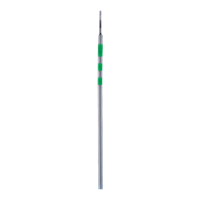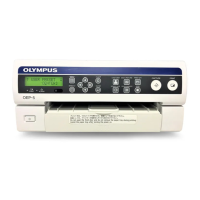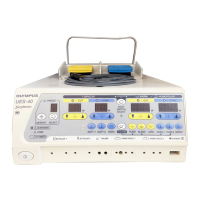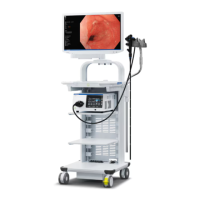40
Chapter 6 Recommended Reprocessing Methods and Chemical Agents
VISERA RHINO-LARYNGO VIDEOSCOPE ENF-V2
6.4 Disinfectant solution
In general, 2.0% to 3.5% glutaraldehyde solutions, when used according to the
manufacturer’s instructions for achieving disinfection, are compatible with
Olympus endoscopes. Contact Olympus for the names of specific brands that
have been tested for compatibility with this endoscope.
For information on the germicidal effectiveness of any solution, refer to the
solution’s instructions or contact the manufacturer of the disinfectant.
If the disinfectant solution is reused, routinely check its efficacy with a test strip
recommended by the manufacturer. Do not use disinfectant solutions beyond
their expiration date.
Do not use the endoscope for examination after it has been
disinfected only with in alcoholic.
• Use only disinfectant solutions whose compatibility for
disinfecting endoscopic instruments is certified by
manufacturers, and are approved by a competent authority.
Incompatible disinfectant solutions may considerably
damage Olympus endoscopes and accessories. For further
information on disinfectant agents, please contact Olympus.
• For information about the concentration, temperature and
immersion time, refer to the instructions given by the
manufacturer of the disinfectant solution. Do not exceed
respective levels specified by the manufacturer.
6.5 Rinsing water
To remove residuals completely, the condition of sterilized de-ionized water (Aq.
Dest.) for rinsing must follow the EN285 standard. Water which has been
processed (e.g. filtered) to improve its microbiological quality may be used.
In case non-sterile water is used after manual or automated disinfection, gently
wipe the endoscope with 70% ethyl alcohol. The water quality chosen by your
institution should be determined by national and local regulations and/or
guidelines as well as your hospital’s infection control committee.
• Do not use tap water for rinsing because it might be
chlorinated.
• Do not reuse rinsing water.

